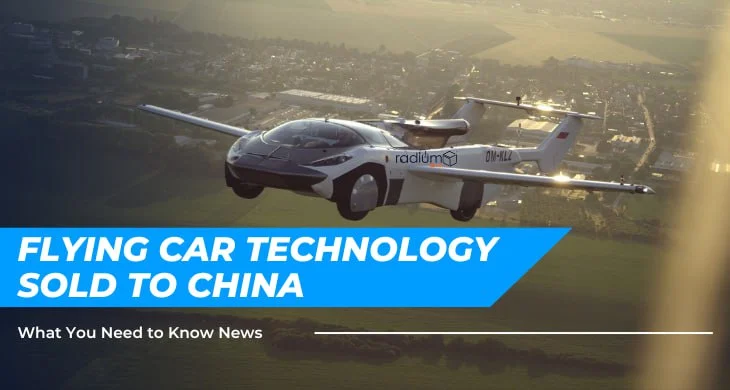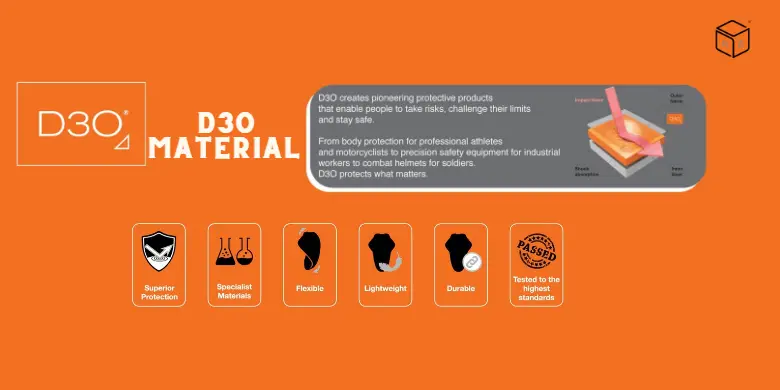In a noteworthy development, a Chinese company has obtained the technology powering a successful flying car initially created in Europe. This acquisition marks a significant milestone in the realm of transportation innovation. The flying car, powered by a BMW engine and conventional fuel, underwent successful test flights in Europe, demonstrating its viability as a dual-mode vehicle. Now, with exclusive rights to manufacture and utilize this technology within a specified area of China, the Hebei Jianxin Flying Car Technology Company is poised to introduce this cutting-edge mode of transportation to a new market. This move underscores China’s proactive approach to embracing futuristic transportation solutions and signals a potential shift in the global landscape of personal mobility. Let’s delve deeper into the implications of this acquisition and explore how it could influence the future of transportation worldwide.
The European Flying Car: AirCar
The AirCar, propelled by a BMW engine and conventional fuel, catapulted into the spotlight in 2021 with a monumental accomplishment. During its historic flight between two Slovakian airports, this revolutionary vehicle showcased its extraordinary ability to seamlessly transition from a car to an aircraft in a mere two minutes. This remarkable feat captured the imagination of onlookers worldwide, demonstrating the AirCar’s potential to redefine personal transportation.
What set the AirCar apart was not only its ability to transform, but also its practicality and efficiency as a mode of aerial transportation. With a commendable flight duration of 35 minutes, it proved its capability to navigate the skies with ease, utilizing traditional runways for take-off and landing. This fusion of ground and air travel capabilities represented a paradigm shift in mobility, offering travelers the unparalleled freedom to seamlessly transition between road and sky.
As the AirCar soared to new heights, it ignited excitement and anticipation for the future of transportation. Its innovative design and performance capabilities positioned it as a trailblazer in the burgeoning market of flying vehicles, paving the way for a new era in urban mobility. With its groundbreaking technology and transformative potential, the AirCar heralded a new chapter in transportation history, promising to reshape the way people move and interact with their surroundings in the years to come.
Chinese Acquisition
The acquisition of exclusive rights to produce and operate AirCar aircraft by Hebei Jianxin Flying Car Technology Company marks a significant milestone in China’s quest for cutting-edge transportation solutions. Headquartered in Cangzhou, China, Hebei Jianxin is strategically positioning itself as a leader in the burgeoning field of aerial mobility.
This landmark agreement underscores China’s commitment to driving technological innovation and addressing the evolving demands of transportation in the 21st century. As urbanization and population growth continue to strain traditional transportation infrastructure, the development of flying transport solutions presents a promising solution for mitigating congestion and improving mobility.
Hebei Jianxin’s acquisition of AirCar technology signals the company’s intent to capitalize on the growing demand for innovative transportation solutions. By leveraging its expertise and resources, Hebei Jianxin aims to revolutionize the way people and goods are transported, ushering in a new era of aerial mobility.
Moreover, this strategic investment aligns with China’s broader vision of creating a more sustainable, efficient, and interconnected transportation ecosystem. By embracing emerging technologies and fostering collaboration between public and private sectors, China is positioning itself as a global leader in transportation innovation.
As Hebei Jianxin moves forward with its plans to manufacture and deploy AirCar aircraft, it represents a significant step forward in China’s journey towards realizing the vision of futuristic transportation solutions. With its sights set on the future, Hebei Jianxin is poised to shape the trajectory of transportation in China and beyond, paving the way for a more accessible, efficient, and sustainable future of mobility.
China’s Focus on Flying Transport
In recent years, China has emerged as a trailblazer in the realm of flying transport solutions, marking a significant shift towards innovative modes of transportation. With notable advancements in passenger-carrying drones and electric flying taxis, the country has showcased its commitment to revolutionizing the way people travel. This commitment was further underscored by the recent acquisition of AirCar technology by a Chinese firm, highlighting China’s dedication to fostering innovation and pushing the boundaries of transportation technology.
By investing in cutting-edge aerial mobility solutions, China aims to address pressing challenges associated with urbanization, congestion, and environmental sustainability. These developments not only demonstrate China’s proactive approach to embracing emerging technologies but also reflect its vision for a future where transportation is more efficient, interconnected, and sustainable.
As China continues to invest in research, development, and implementation of flying transport solutions, it is poised to lead the global conversation on the future of mobility. Through its focus on innovation and forward-thinking initiatives, China is positioning itself as a key player in driving progress towards a transportation ecosystem that meets the evolving needs of society.
Through strategic investments and partnerships, China is laying the groundwork for a future where flying cars and other aerial vehicles become integral components of everyday transportation networks. This transformative vision holds the potential to revolutionize how people and goods move from place to place, ushering in a new era of mobility that is safer, more efficient, and more sustainable for all.
Challenges and Opportunities
The sale of AirCar technology to China marks a pivotal moment in the evolution of transportation, holding the promise of revolutionizing urban mobility. However, amid this promise lie significant obstacles that must be addressed to fully realize the potential of flying cars. Chief among these challenges is the need for suitable infrastructure to support the safe operation of flying vehicles. This includes the development of designated landing pads, air traffic management systems, and maintenance facilities tailored to accommodate flying cars.
Additionally, regulatory frameworks governing the use of flying cars must be established to ensure safety and mitigate potential risks. These regulations will need to address issues such as airworthiness certification, pilot licensing requirements, and airspace management protocols. Public acceptance of this innovative technology is another critical factor that cannot be overlooked. Educating the public about the safety and benefits of flying cars, addressing concerns about noise pollution and privacy, and fostering a culture of trust and confidence in the technology are essential steps in gaining widespread acceptance.
Despite these challenges, China’s proactive stance towards innovation and technology positions it as a frontrunner in the race to unlock the full potential of flying cars. With its vast resources and commitment to technological advancement, China has the capacity to overcome these barriers and accelerate the development and adoption of flying car technology. By investing in infrastructure development, implementing supportive regulations, and fostering public awareness and acceptance, China can lead the way in integrating flying cars into existing transportation systems.
Through collaborative efforts and strategic initiatives, China has the opportunity to leverage flying car technology to address pressing urban mobility challenges and usher in a new era of transportation innovation. By seizing this opportunity, China can assert its leadership in shaping the future of transportation and propel itself to the forefront of the global mobility revolution.
Future Implications
The recent sale of AirCar technology to China has sparked discussions about the future of flying cars and China’s potential dominance in this emerging sector. While prototypes like AirCar capture the imagination with their futuristic capabilities, the practical implementation of flying cars may present numerous logistical challenges and regulatory hurdles. Despite the excitement surrounding these innovative vehicles, there are still uncertainties regarding their integration into existing transportation systems and airspace regulations.
Additionally, concerns about safety, infrastructure requirements, and public acceptance need to be addressed before flying cars can become a mainstream mode of transportation. While China’s proactive approach to innovation and technology may give it a competitive edge in developing flying cars, the road to widespread adoption is likely to be complex and multifaceted. As with any groundbreaking technology, the transition to flying cars will require collaboration between industry stakeholders, government agencies, and the public to navigate the challenges and ensure a safe and efficient transportation system for the future.
While the potential of flying cars is undeniable, it’s essential to approach their development and deployment with a realistic understanding of the complexities involved and a commitment to addressing them thoughtfully and responsibly.
Conclusion
The acquisition of AirCar technology by a Chinese firm highlights the increasing global momentum behind the development of flying transport solutions. As advancements in technology accelerate, the prospect of flying cars becoming a tangible reality in the near future becomes increasingly plausible. This significant move underscores the growing interest and investment in innovative transportation solutions worldwide. With each stride forward in technological innovation, the boundaries of what is possible in transportation are continually being pushed. The acquisition of AirCar technology represents a pivotal step towards realizing the vision of aerial mobility on a global scale. As we witness the convergence of cutting-edge technology and ambitious transportation goals, the future of mobility appears closer than ever before.
Frequently Asked Questions:
Ques. What is AirCar, and why is its sale to China significant?
Ans. AirCar is a groundbreaking vehicle that can transform from a car into an aircraft in just over two minutes. Its sale to China is significant because it demonstrates China’s commitment to advancing transportation technology and signals its entry into the emerging market of flying cars.
Ques. How does AirCar technology differ from other flying transport solutions?
Ans. AirCar technology differs from other flying transport solutions in that it does not take off and land vertically like drones or electric flying taxis. Instead, it requires a runway for takeoff and landing, making it more similar to traditional aircraft.
Ques. What challenges does the development of flying cars face, particularly in terms of infrastructure and regulation?
Ans. The development of flying cars faces challenges in infrastructure and regulation. Building the necessary infrastructure, such as airports and landing pads, and establishing regulations to ensure safety and airspace management are key hurdles to overcome.
Ques. How does China’s acquisition of AirCar technology impact the future of transportation?
Ans. China’s acquisition of AirCar technology could impact the future of transportation by accelerating the development and deployment of flying cars in the country. It may also stimulate innovation and investment in aerial mobility solutions globally.
Ques. What are the potential benefits and drawbacks of flying cars?
Ans. Potential benefits of flying cars include reduced congestion, faster travel times, and increased mobility. However, drawbacks include concerns about safety, noise pollution, and the need for extensive infrastructure development and regulatory frameworks.




